My Enquiry (0)
No artwork has been selected.
Please choose an artwork to enquire.
Enquiry Submitted
Thank you for your enquiry and interest in our artists’ work. A member of the gallery team will respond shortly.
000%
30 April - 26 August 2024
Designed to awaken a sense of play and wonder, Porky Hefer’s new collection is a “toy box” of inhabitable, animal-inspired sculptures that celebrate the intelligence and ingenuity of wild creatures.
Southern Guild and Galerie56 are excited to present no bats, no chocolate, a solo exhibition of handcrafted seating environments by South African artist Porky Hefer, opening 30 April and running through to 26 August 2024. Designed to awaken a sense of play and wonder, Hefer’s new collection is a “toy box” of inhabitable, animal-inspired sculptures that celebrate the intelligence and ingenuity of wild creatures. Each of the nine larger-than-life forms appeals directly to our imaginations, inviting a physical and emotional connection that places humans in communion with – rather than dominion over – the animal kingdom.
In no bats, no chocolate at Galerie56 in Tribeca, Hefer celebrates the “weird talents” and distinctive adaptations of a menagerie of animals, including a walrus, ladybird beetle, zebra, wildebeest/gnu, bat, bushbaby, beaver and crocodile. He points to the swarm intelligence of migrating wildebeest, which democratically decide where and how to cross rivers and traverse ground, and the mutualism between zebras and the bacteria that live in their gut, which help digest their food but transform into protein during times of scarcity.
While beavers are often seen as a menace, Hefer notes, they create vital ecosystems when they make dams, giving little fish a chance to grow and attracting frogs and other species. Their teeth contain high amounts of iron, which turns them orange and enables them to withstand the mechanical stress of gnawing through wood – including trees more than 10 feet tall. Their incisors never stop growing, so they do not become too worn despite years of chewing through hardwoods. Bats also have endearing characteristics: they all have belly buttons and in two species of Old World bats, the males can produce milk to feed their young. The flying mammals are responsible for pollinating many plants that we use for medicinal, cultural and economic purposes, including bananas, avocados, mangoes, agave and cacao – so you can give a little thanks when indulging in chocolatey sweetness.
With an eco-activist mindset, Hefer is a designer deeply immersed in animal behaviours, natural phenomena, organic forms and ecosystems. His iconic human-sized nests, woven in Kooboo cane, arose from his fascination with the nest-making skills of the sociable weaver bird, while major projects like Endangered (2018) explored sustainability in an African context through craft and the use of upcycled materials, and foregrounded vulnerable species to raise significant funds for the Leonardo DiCaprio Foundation’s conservation programmes. Plastocene (2020), commissioned by the National Gallery of Victoria in Australia for the NGV Triennial, speculated about the mutant life-forms our plastic-filled oceans would give rise to after the Anthropocene era and presented amongst others, cup-fish, straw-fish, netfish and a 50 foot-wide octopus made from handwoven woollen ‘cigarette butts’.
Despite its use of humour and fantasy, no bats, no chocolate is a serious plea for greater tolerance of and reverence towards wild species, whose numbers are being outpaced by the proliferation of domesticated animals. “So many kids growing up in big cities don’t have positive relationships with wild animals. Their default response is one of fear and hostility,” Hefer notes. “But you have to love animals to protect them, and the less contact children have with animals, the less desire they will have to safeguard them.”
Growing up on farms in South Africa immersed the artist in a culture of interacting with animals. “I learnt to understand animals and see the difference in their personalities. Animals adapt to their environment, while humans predominate over nature to suit our needs. We’ve been taught we are higher up in the pecking order and that animals don’t have souls, but they so obviously do,” he says.
Hefer’s message of constructive co-existence with nature is borne out in his design methodology too. Referring to this collection as “a new kind of animal architecture”, he approaches it as a series of prompts inviting various ways to interact with the works: the audience can crawl inside the wildebeest or climb up onto its back, stretch out on or sit astride the walrus chaise, ride the pull-toy zebra and wheel it to another location, perch on the beavers or lie upon the quilted leather pads that are their tails. This dance of exchange between the user’s body and the work is at the crux of Hefer’s project, rooted in the disruptive power of play as a means to ignite a more creative, connected and humane way of relating to our environment and each other.
In this regard, Hefer’s forebears are the Radical Design Group of thinkers, architects and designers for whom the idea of play was paramount in opening up new types of social interactions. The work of Ettore Sottsass, Gae Aulenti, Superstudio, Gaetano Pesce and others posited that change ripples outwards from the domestic nucleus of the home. Hefer’s soft rebellion takes this even further with his embrace of local materials and craftsmanship, creating a system of collaborative manufacturing that spotlights the artisanal talents around him. The works in no bats, no chocolate were made with contributions by longtime collaborators including felt artist Ronel Jordaan, welder Wellington Moyo and leatherwork studio Leather Walls. Cradled within their plush interiors or energised by their unconventional forms, we rediscover the child within, emerging with a renewed sense of curiosity and connection with the natural world.
Artists
Works

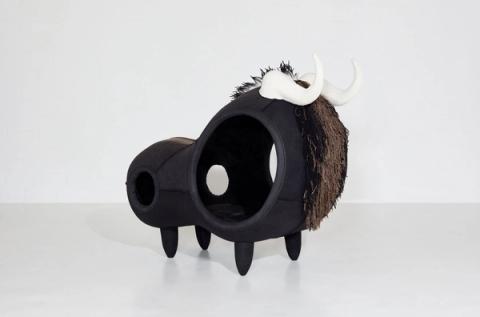
Porky Hefer
Robert Nesta, 2024Felt, sheepskin, steel, timber
66.1 x 79.1 x 42.9 in. | 168 x 201 x 109 cm
Edition of 3
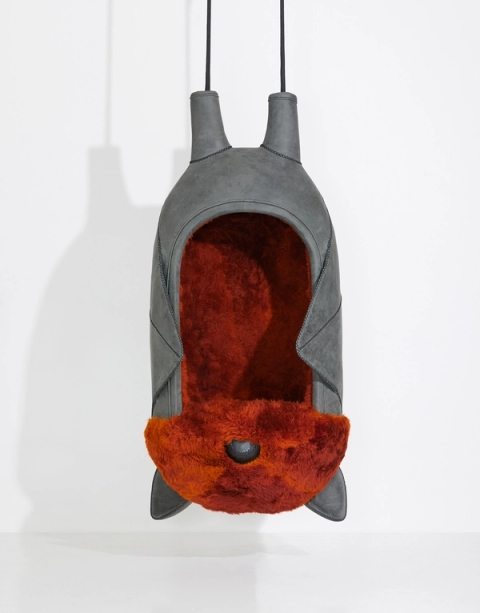
Porky Hefer
Tao, 2024Leather, steel, sheepskin
78.4 x 37 x 35.8 in. | 199 x 94 x 91 cm
Edition of 3

Porky Hefer
My first beetle, 2024Leather, sheepskin, steel, timber
24.4 x 51.1 x 43.3 in. | 62 x 130 x 110 cm
Edition of 5
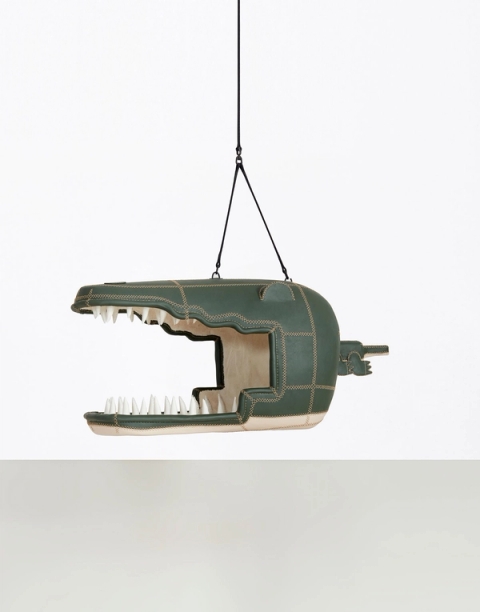
Porky Hefer
Crocodylus Freddy (Previously Crocodylus Eugenie), 2015Leather, sheepskin, steel
49.6 x 112.3 x 47.3 in. | 126 x 285 x 120 cm
Edition of 2, 1AP
Sold
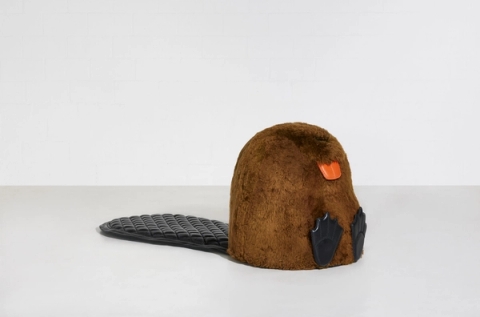
Porky Hefer
Kevin, 2024Leather, sheepskin, steel
35 x 42.9 x 96 in. | 89 x 109 x 244 cm
Edition of 5
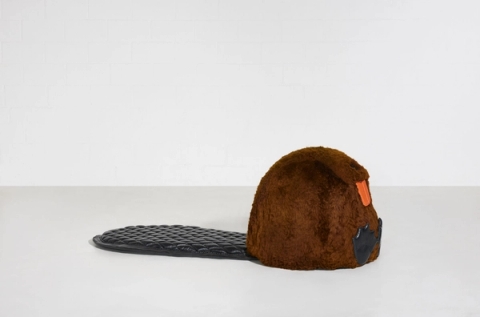
Porky Hefer
Maria, 2024Leather, sheepskin, steel
29.5 x 42.9 x 97.3 in. | 75 x 109 x 247 cm
Edition of 5
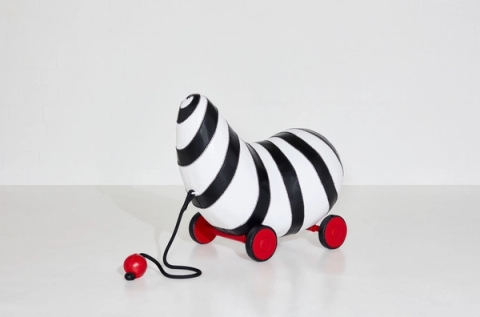
Porky Hefer
Victor, 2024Leather, steel, castors
50 x 35 x 58.3 in. | 127 x 89 x 148 cm
Edition of 5

Porky Hefer
Warren, 2024Felt, sheepskin, steel
55.9 x 61 x 70.9 in. | 142 x 155 x 180 cm
Edition of 3






